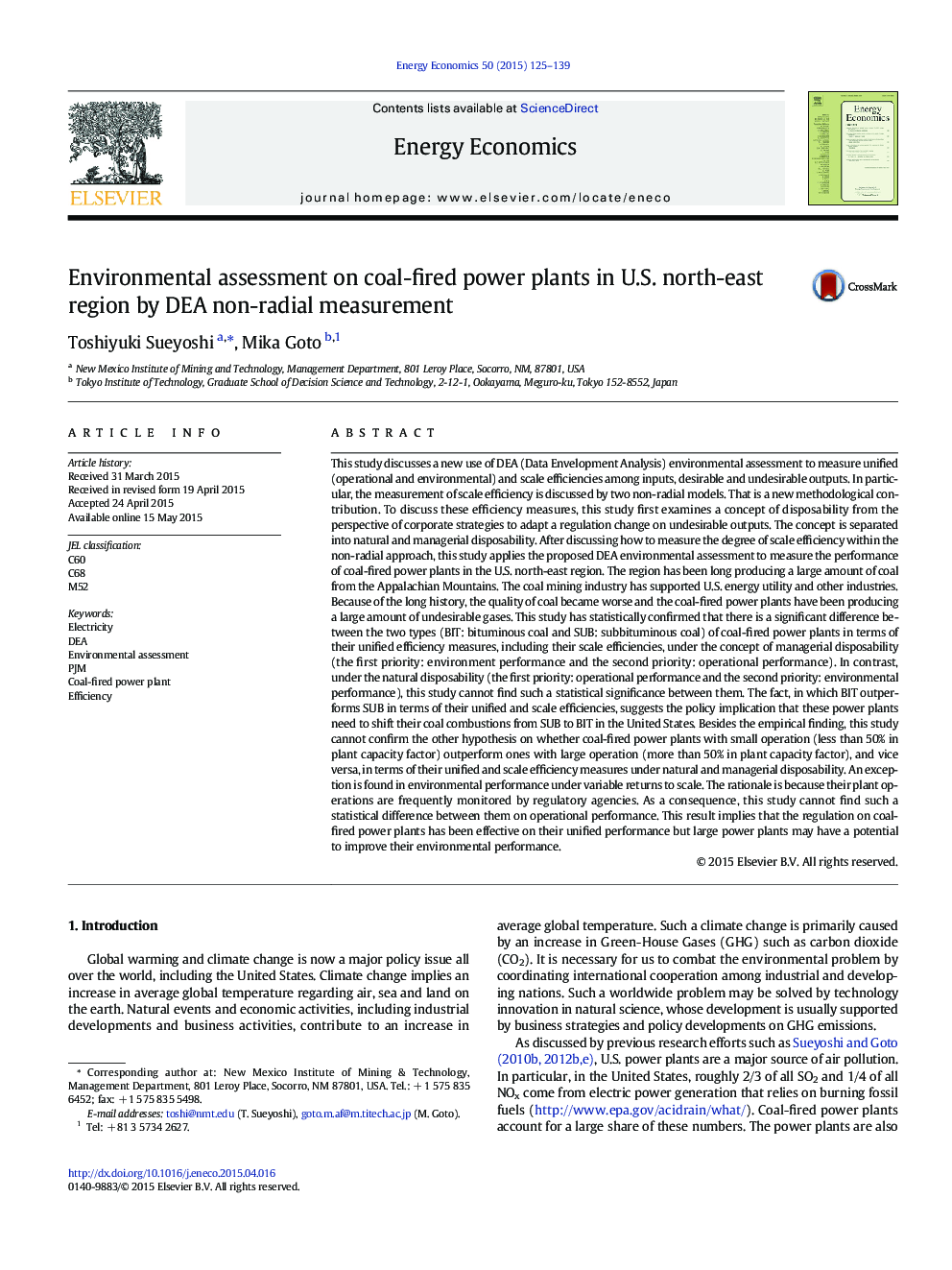| کد مقاله | کد نشریه | سال انتشار | مقاله انگلیسی | نسخه تمام متن |
|---|---|---|---|---|
| 5064338 | 1476713 | 2015 | 15 صفحه PDF | دانلود رایگان |

- This study discusses a new use of DEA to measure the degree of scale efficiency.
- The performance of coal-fired power plants is examined by the proposed approach.
- A difference is found between bituminous (BIT) and subbituminous (SUB) coals in their environmental performance.
- The coal-fired power plants need to shift their coal conversions from SUB to BIT.
- The regulation on coal-fired power plants has been effective under U.S. Clean Air Act.
This study discusses a new use of DEA (Data Envelopment Analysis) environmental assessment to measure unified (operational and environmental) and scale efficiencies among inputs, desirable and undesirable outputs. In particular, the measurement of scale efficiency is discussed by two non-radial models. That is a new methodological contribution. To discuss these efficiency measures, this study first examines a concept of disposability from the perspective of corporate strategies to adapt a regulation change on undesirable outputs. The concept is separated into natural and managerial disposability. After discussing how to measure the degree of scale efficiency within the non-radial approach, this study applies the proposed DEA environmental assessment to measure the performance of coal-fired power plants in the U.S. north-east region. The region has been long producing a large amount of coal from the Appalachian Mountains. The coal mining industry has supported U.S. energy utility and other industries. Because of the long history, the quality of coal became worse and the coal-fired power plants have been producing a large amount of undesirable gases. This study has statistically confirmed that there is a significant difference between the two types (BIT: bituminous coal and SUB: subbituminous coal) of coal-fired power plants in terms of their unified efficiency measures, including their scale efficiencies, under the concept of managerial disposability (the first priority: environment performance and the second priority: operational performance). In contrast, under the natural disposability (the first priority: operational performance and the second priority: environmental performance), this study cannot find such a statistical significance between them. The fact, in which BIT outperforms SUB in terms of their unified and scale efficiencies, suggests the policy implication that these power plants need to shift their coal combustions from SUB to BIT in the United States. Besides the empirical finding, this study cannot confirm the other hypothesis on whether coal-fired power plants with small operation (less than 50% in plant capacity factor) outperform ones with large operation (more than 50% in plant capacity factor), and vice versa, in terms of their unified and scale efficiency measures under natural and managerial disposability. An exception is found in environmental performance under variable returns to scale. The rationale is because their plant operations are frequently monitored by regulatory agencies. As a consequence, this study cannot find such a statistical difference between them on operational performance. This result implies that the regulation on coal-fired power plants has been effective on their unified performance but large power plants may have a potential to improve their environmental performance.
Journal: Energy Economics - Volume 50, July 2015, Pages 125-139